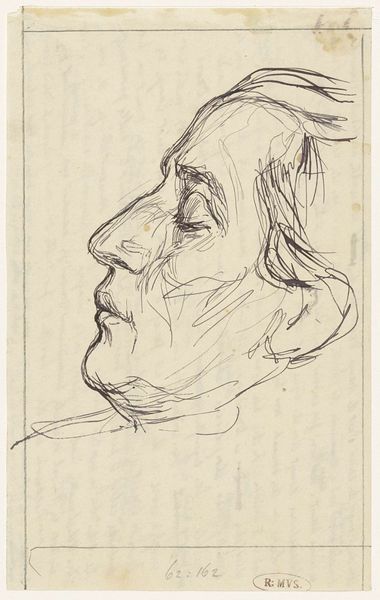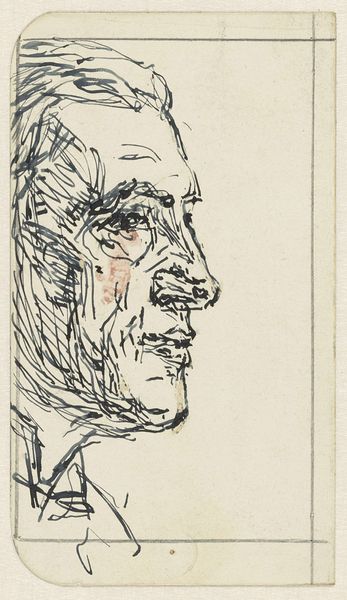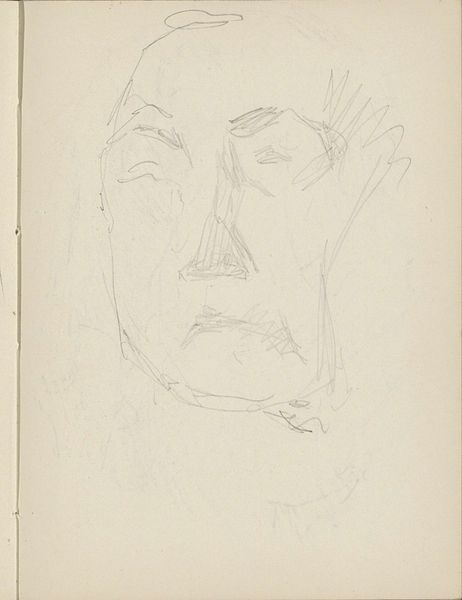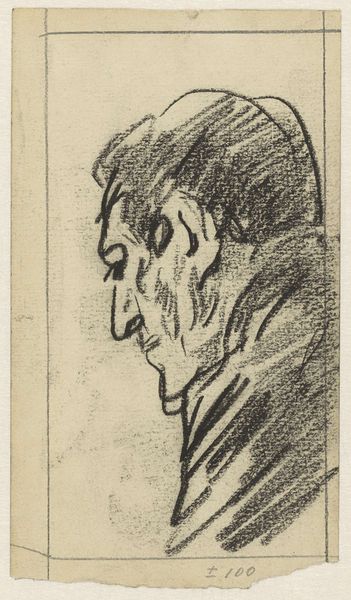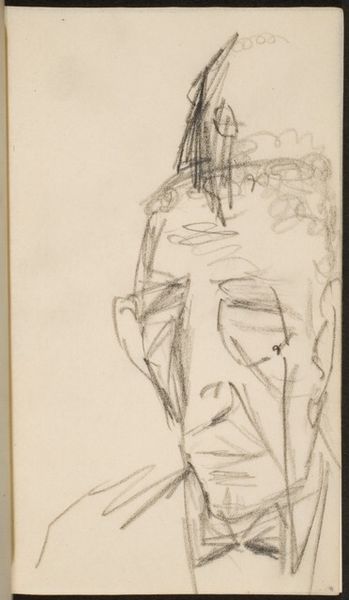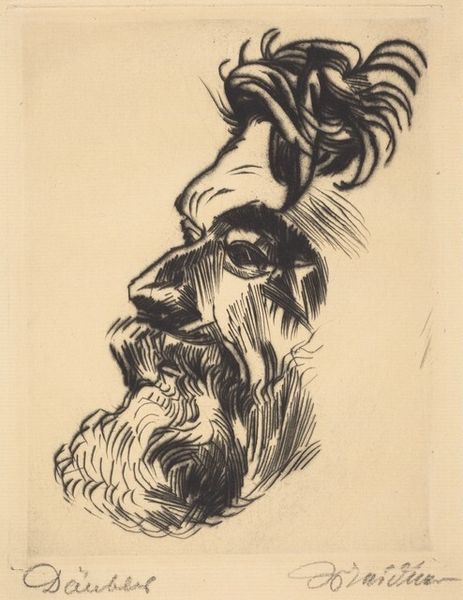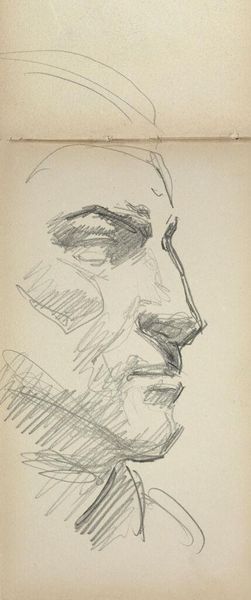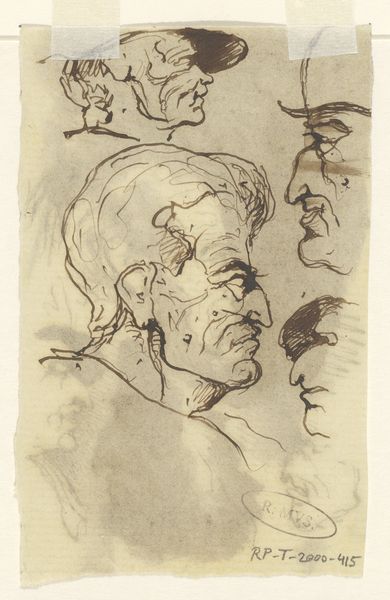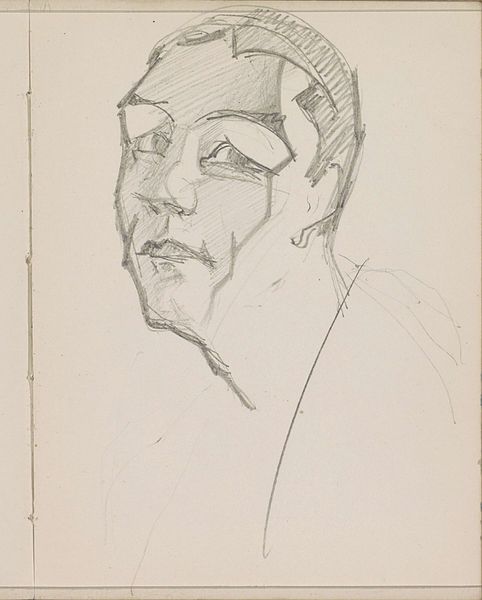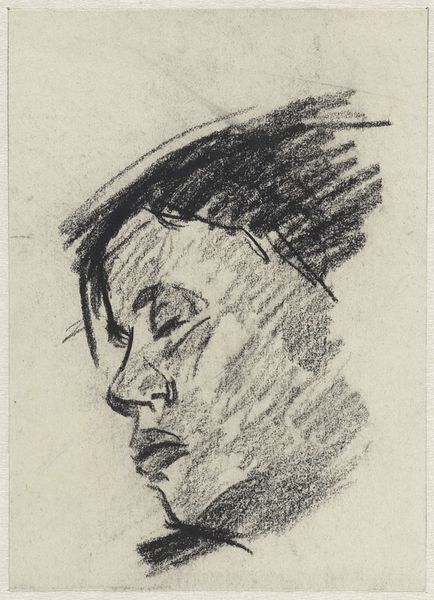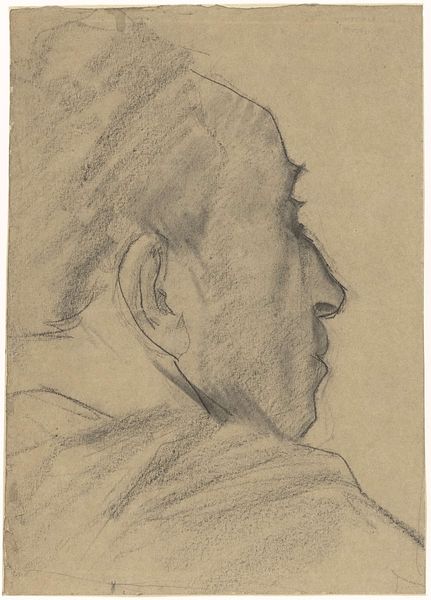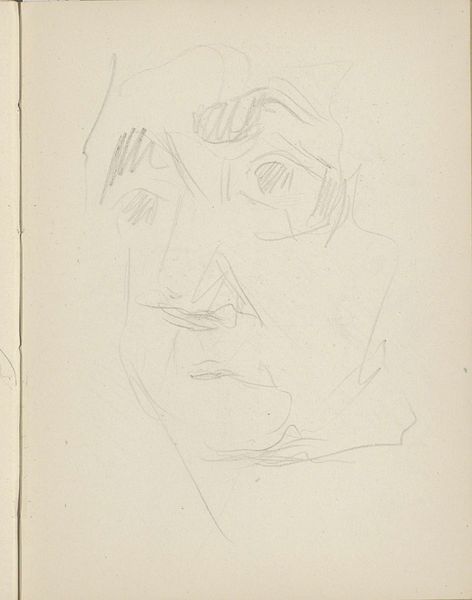
drawing, pencil, graphite
#
portrait
#
drawing
#
amateur sketch
#
light pencil work
#
pencil sketch
#
personal sketchbook
#
idea generation sketch
#
pen-ink sketch
#
pencil
#
graphite
#
sketchbook drawing
#
portrait drawing
#
pencil work
#
sketchbook art
Dimensions: height 121 mm, width 85 mm
Copyright: Rijks Museum: Open Domain
Editor: This is "Manskop, naar rechts" a pencil and graphite drawing by Jac van Looij, created sometime between 1865 and 1930. It looks like a preliminary sketch. I wonder, what does a historian see in a quick sketch like this? Curator: It's interesting to consider sketches like this not just as preliminary studies, but as artifacts embedded in the artistic and social context of their time. What purpose did sketchbooks serve for artists during that period? Were they primarily for personal exploration, or were they also intended for a wider audience, perhaps fellow artists or patrons? Editor: That's a good question. I always thought they were just personal, for practicing. Curator: It's important to remember how the art world functioned then. Access to formal training was often limited, and sketchbooks became vital tools for self-education and for developing an artist's eye. Could this drawing be connected to the academic tradition? Did Van Looij likely receive formal training? Editor: Based on the date, probably. So this could be part of his artistic development, a form of apprenticeship captured on paper? Curator: Precisely. The seemingly simple act of sketching was deeply intertwined with the artistic and social structures of the time. Analyzing the paper, the shading techniques – all provide insights into Van Looij’s artistic formation and, more broadly, the role of drawing within the 19th and early 20th-century art world. Editor: I hadn't considered that even a sketch could be so deeply embedded in the art world around it. Thanks, I'll remember this new perspective for later studies!
Comments
No comments
Be the first to comment and join the conversation on the ultimate creative platform.
